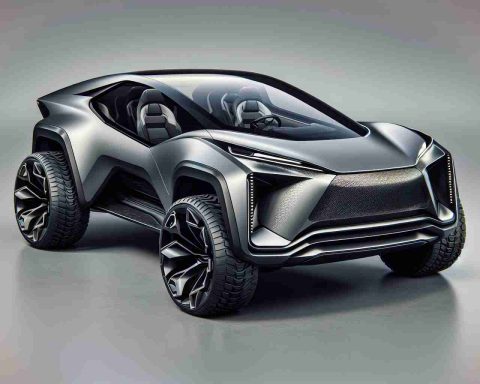Current Trends in China’s EV Market
China’s electric vehicle (EV) market is undergoing a startling transformation. Recent figures indicate a dramatic 50% decline in deliveries during the first week of January, totaling only 206,000 units. This drop comes after a remarkable surge of 42% in sales throughout the previous year, highlighting the volatility of this critical sector.
A key driver behind this sudden downturn is the removal of government subsidies that had previously stimulated consumer interest. The substantial 20,000 yuan trade-in bonus provided for EV purchases has been eliminated, leading to a noteworthy decrease in sales. Market experts anticipated this shift, suggesting the end of incentives would alter buying behavior significantly.
Despite this recent slump, December 2023 witnessed a bustling period for the sector, with approximately 1.38 million vehicles delivered—the highest number for that month, reflecting a 10% increase compared to November. Many consumers rushed to take advantage of the soon-to-be-terminated subsidies, creating a brief boost in sales.
Looking ahead, the uncertainty looms large for China’s EV market. Experts predict that ongoing fluctuations are likely as consumers reassess their options without financial incentives. This shifting terrain may present opportunities for international manufacturers eager to capture a share of the market.
As stakeholders ponder this decline, the broader implications for sustainability and the future of transportation require close attention.
Broader Implications of China’s EV Market Trends
The evolving landscape of China’s electric vehicle (EV) market carries significant ramifications that extend far beyond the borders of the automotive sector. As one of the largest EV markets globally, China’s shifts in sales dynamics can influence global supply chains and manufacturing practices. With the removal of government subsidies, a crucial pivot point has emerged, prompting both domestic and international manufacturers to reconsider their market strategies.
Culturally, the decline in EV sales may signal a transformation in consumer priorities amid rising economic pressures. As buyers reassess the value of electric vehicles without financial incentives, there could be a resurgence of traditional fuel vehicles, re-aligning public perception of sustainability. This cultural shift could impede progress toward green consciousness, which is vital for combating climate change.
Economically, this trend could exacerbate existing trade tensions. International brands might seize this opportunity to enter the market, potentially leading to increased competition for domestic manufacturers. Such movements might not only reshape market structures but could also impact global pricing for EV components, particularly batteries, which are primarily sourced from China.
Furthermore, on an environmental scale, the push for EV adoption coincides with China’s ambitious carbon neutrality goals by 2060. A sustained decline in EV purchases could delay progress toward reducing fossil fuel dependency, emphasizing the need for an urgent reevaluation of sustainable transport policies.
Ultimately, the fluctuations observed in China’s EV market are not mere statistical blips; they represent a crossroads in the quest for a greener future. The long-term significance of these trends warrants vigilant monitoring as stakeholders navigate the complexities of a rapidly shifting global and local landscape.
The Shifting Landscape of China’s Electric Vehicle Market: What You Need to Know
Current Trends in China’s EV Market
China’s electric vehicle (EV) market is in the midst of a dramatic transformation, revealing notable trends that could shape its future. Recent developments indicate a stark 50% decline in EV deliveries in early January, with only 206,000 units reported, raising questions about the sector’s resilience and potential growth. This drop follows an impressive 42% increase in sales throughout the previous year, highlighting the inherent volatility of the market.
Key Factors Influencing the Market
A crucial factor driving the recent downturn is the removal of government subsidies, which previously incentivized consumer interest in electric vehicles. The abolishment of the 20,000 yuan trade-in bonus for EV purchases has resulted in a significant decrease in sales, confirming market analysts’ predictions that the absence of financial incentives would substantially alter consumer behavior.
The Surge Before the Fall
Prior to this decline, December 2023 proved to be a robust month for the EV sector. Approximately 1.38 million vehicles were delivered in December, marking a 10% increase compared to November. This surge was largely attributed to consumers hurrying to purchase vehicles before the subsidy program ended, showcasing how governmental policies significantly influence market dynamics.
Future Predictions and Opportunities
Looking to the future, analysts express concern about ongoing volatility in China’s EV market. As subsidies have ended, consumer purchasing behavior is expected to shift dramatically. This landscape represents both a challenge and an opportunity for international automakers interested in entering the Chinese EV market, as local manufacturers reevaluate their strategies to maintain competitiveness.
Market Analysis and Insights
# Trends
– Increased interest in sustainable practices: As consumer awareness grows, manufacturers are focusing on environmentally friendly technologies and practices.
– Innovative technologies: Advancements in battery technology and EV infrastructure are pivotal for future growth.
# Use Cases
– Urban commuting: Many consumers are leaning towards electric vehicles as practical solutions for city travel and congestion issues.
– Commercial vehicles: Companies are exploring EVs for logistics and delivery, which could become a significant market segment.
Pros and Cons of EV Adoption in China
Pros:
– Environmental benefits: Reduced emissions contribute to cleaner air quality.
– Government support (historically): Incentives have spurred rapid growth in EV adoption.
Cons:
– Recent subsidy removal: This has led to immediate market instability and consumer hesitation.
– Infrastructure challenges: Charging stations and technology need to expand to support growing EV numbers.
Limitations and Challenges
As the market evolves, several limitations persist:
– Infrastructure readiness: The availability of charging stations across rural and urban areas is still insufficient.
– Consumer hesitancy: With financial incentives gone, many buyers may delay purchasing decisions, awaiting better pricing or features.
Conclusion
The future of China’s electric vehicle market remains uncertain yet filled with potential for those willing to adapt. Stakeholders in this sector must remain vigilant and responsive to shifts in consumer behavior and regulatory environments. The implications for sustainability and the ongoing transition to electric mobility stand as a testament to both the challenges and opportunities ahead. For more insights, visit China Daily for the latest updates on the EV market landscape.














